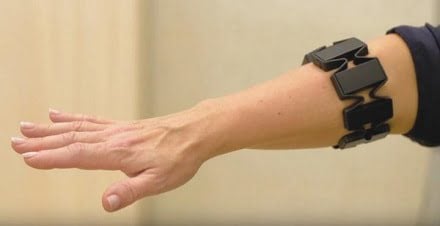Disorders of balance and vestibular function (balance and eye movement) can be diagnosed using a new portable, and inexpensive virtual reality device.
Researchers at Kaunas University of Technology (KTU) and Lithuanian University of Health Sciences (LSMU) have joined forces to develop this new technology to diagnose a common health disorder.

Simple device for diagnosing vestibular disorders created at Kaunas universities (KTU, LSMU) uses virtual reality. Courtesy of KTU and LSMU.
Ingrida Uloziene, professor at LSMU said the condition is difficult to diagnose.
"Strong systemic dizziness, followed by imbalance, nausea, paleness and perspiration interferes with human activities and can cause great anxiety,” said Uloziene. “If the condition persists, the quality of life, mood and work efficiency suffers. Sometimes dizziness can be a symptom of more serious diseases.”
Tomas Blažauskas, associate professor at KTU Faculty of Informatics said they used a Myo Gesture Control Armband, a wearable device, controlled by hand movements based on Samsung Gear Virtual Reality software, to diagnose dizziness in a simple way.
"We had to implement the technical solution of connecting the virtual reality program, and make all the different systems to efficiently communicate between each other using different programming languages and environments,” said Blažauskas.
According to Vaidotas Marozas, a researcher at KTU Institute of Biomedical Engineering, the KTU and LSMU collaboration is the first of its kind.
"Our system is portable, uses virtual reality and is controlled by movements. This is the first and so far the only technology of its kind in Lithuania,” said Marozas. “There are different systems created in other countries, but they are fixed and do not use virtual reality.”
The innovative technology is currently being tested by volunteers with further testing on patients expected in the near future.
